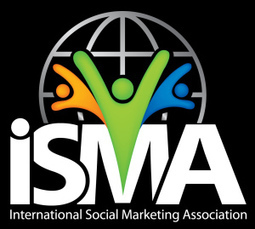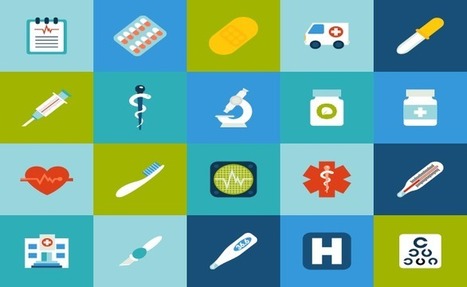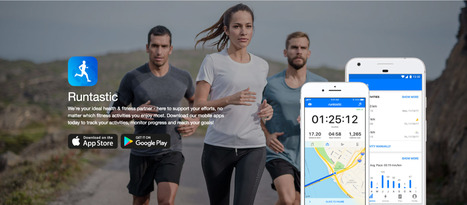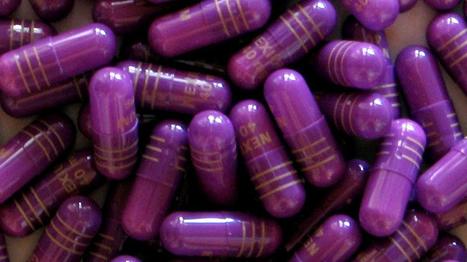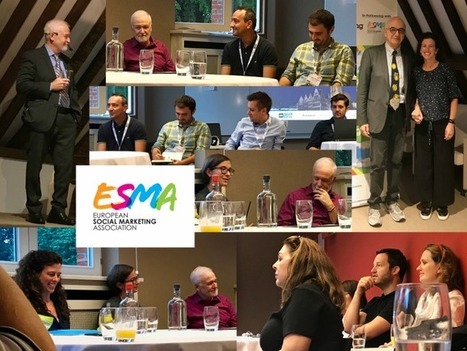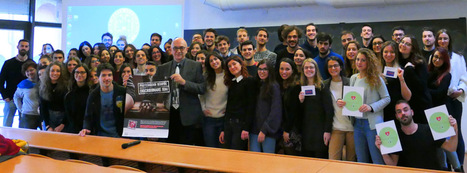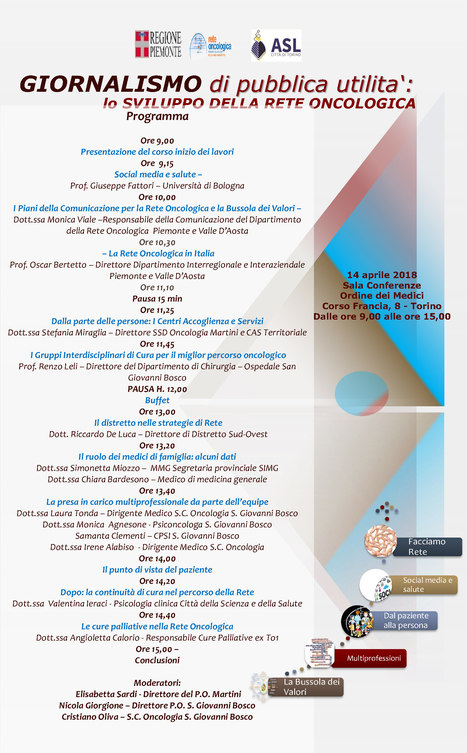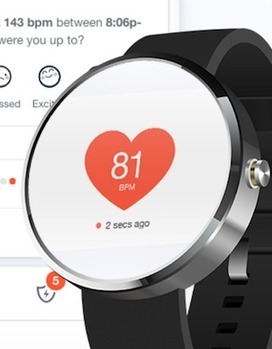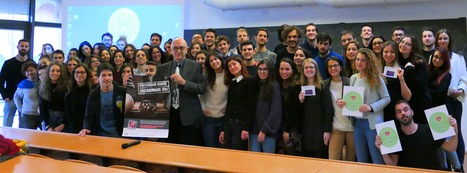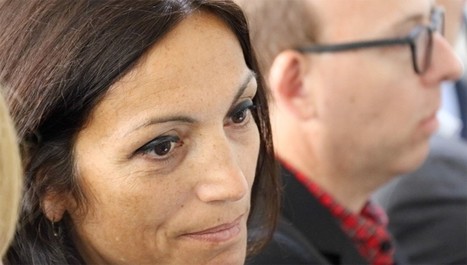 Your new post is loading...
 Your new post is loading...

|
Scooped by
Giuseppe Fattori
June 24, 2020 4:05 PM
|

|
Scooped by
Giuseppe Fattori
September 12, 2018 12:52 PM
|

|
Scooped by
Giuseppe Fattori
September 12, 2018 11:11 AM
|
Preliminary data from the field suggests that social media is becoming a powerful addition to the health communicators’ toolkit. Although there is a great deal of interest in using social media as a tool for public health communications, the research evaluating its utility is still in its infancy. As of yet, few research studies have examined the broader utility of social media for the adoption of health promoting and protective behaviours.

|
Scooped by
Giuseppe Fattori
July 26, 2018 5:53 PM
|
#SaluteSocial: - News
- Osservatorio
- Twitter
- #SaluteSocialGiovani
- #MappaSaluteSocial
- Slideshare

|
Scooped by
Giuseppe Fattori
April 12, 2018 6:53 AM
|
Developed by a 13-member working group chaired by Professor Jeff French (ESMA) over the past two and half years, the Global Consensus paper represents a broad agreement about the fundamental concepts and central principle of social marketing. The consensus definition of Social Marketing: Social Marketing seeks to develop and integrate marketing concepts with other approaches to influence behaviour that benefit individuals and communities for the greater social good. Social Marketing practice is guided by ethical principles. It seeks to integrate research, best practice, theory, audience and partnership insight, to inform the delivery of competition sensitive and segmented social change programmes that are effective, efficient, equitable and sustainable
April 04, 2018 - HHS and the Office of the National Coordinator for Health IT (ONC) has issued a new guidebook to assist patient access to health information. This playbook comes as a part of the HHS and CMS MyHealthEData initiative.
The ONC Guide to Getting and Using Your Health Records is an online and patient-facing document helping patients overcome the challenges they face in accessing their medical records. The guide reviews obtaining a patient health record, checking the health record for accuracy and completeness, and using health records and data sharing for better patient engagement.
Via Lionel Reichardt / le Pharmageek, Giuseppe Fattori

|
Scooped by
Giuseppe Fattori
April 11, 2018 4:59 PM
|
A cura di Piergiorgio Ferretti, Maurizio Gottin – ASL TO4 APP PER LA CORSA E L’ATTIVITÀ MOTORIA QUOTIDIANA 1) RunKeeper - http://runkeeper.com/ RunKeeper sfrutta il GPS dello smartphone per raccogliere informazioni sulla corsa: inoltre è possibile attivare un “allenatore virtuale” per migliorare il tempo di corsa con un programma di allenamento specifico, ricevendo messaggi incoraggianti. RunKeeper può anche impostare passeggiate, contare i passi, misurare gite in bicicletta, canottaggio, sci e altro ancora; in generale è adatta per controllare qualsiasi sport di spostamento lungo un percorso. 2) Runtastic - http://www.runtastic.com/ App gratuita per iPhone e Android ideale per lo sport all’aperto. Come un personal trainer permette di programmare gli allenamenti e controllare i risultati nella corsa e nel ciclismo. Anche questa App sfrutta il GPS per registrare i percorsi ed i progressi delle sessioni di corsa nel tempo. Di questa applicazione esiste inoltre una versione non gratuita progettata per il fitness e gli esercizi di ginnastica e palestra da fare anche a casa: Runtastic Results - https://www.runtastic.com/it/results .
There are clear differences in how each generation of cancer patients and caregivers use online resources and approach their cancer care. In 2014, there were an estimated 14,738,719 people living with cancer in the United States. Every year, about 1.7 million people are diagnosed with cancer. In only two decades, the way patients with cancer approach their diagnosis has changed in dramatic ways. Perhaps the biggest factor in that revolution is access to the internet — and more useful health information and support communities on it.
The use of social media (SM) in healthcare has provided a novel means of communication in line with a more modernised approach to care. For physicians, SM provides opportunities for enhancing professional development, networking, public health, and organisational promotion, among others. For patients, SM provides potential for taking a more active role in health, sharing information, and building virtual communities, especially in the case of chronic and/or rare diseases. SM has the potential to bring patients and physicians closer together, beyond the walls of clinics; however, the interaction between physicians and patients on SM has received mixed feelings, especially from the physicians’ perspective. On the one hand, the potential for a more enhanced, albeit remote, communication has been viewed positively, especially in an era where digital technologies are fast expanding. Conversely, concerns around breaches in professional boundaries and ethical conduct, such as mishandling of patient-sensitive information on these platforms, have fuelled heavy criticism around its use. From this viewpoint, issues arising from the use of SM in healthcare, with a focus on the patient–physician interaction, discussing the potential benefits and pitfalls are covered in this article.

|
Scooped by
Giuseppe Fattori
January 25, 2018 4:19 PM
|
Social marketing is a discipline unfamiliar to many policymakers, often confused with the more frequently applied and studied fields of social media, behavioral economics, or social change. Social marketing is a growing field and methodology, however, that has been successfully applied to improve public health, prevent injuries, protect the environment, engage communities, and improve financial well-being. Policymaking for Citizen Behavior Change is designed to demonstrate the ways in which social marketing can be an effective and efficient tool to change citizens’ behavior, and how to advocate for and support its appropriate application.
Question Does gamification, the application of game design elements such as points and levels in nongame contexts, that uses insights from behavioral economics to enhance social incentives increase physical activity among families in the community? Findings In this randomized clinical trial of 200 adults comprising 94 families, participants in the gamification arm had significantly greater physical activity during the 12-week intervention than participants in the control arm, including the proportion of days that step goals were achieved and the change in the mean daily steps. Meaning Gamification designed to leverage insights from behavioral economics to enhance social incentives could offer a promising approach to improve daily health behaviors.
BackgroundDoctors are uncertain of their ethical and legal obligations when communicating with patients online. Professional guidelines for patient-doctor interaction online have been written with limited quantitative data about doctors’ current usage and attitudes toward the medium. Further research into these trends will help to inform more focused policy and guidelines for doctors communicating with patients online.Objective The intent of the study was to provide the first national profile of Australian doctors’ attitudes toward and use of online social media.

|
Scooped by
Giuseppe Fattori
November 23, 2017 3:09 PM
|
Instead, drug companies are just ignoring potentially vital adverse event reports. Pharmaceutical companies are finding that the best—or at least safest—route to take with social media is to just ignore it. Given the a so-far unadapted FDA regulatory scheme for communication via things like Twitter and YouTube comments, rules for how drug companies can and can't interact with consumers online have remained prohibitively vague.
|

|
Scooped by
Giuseppe Fattori
September 12, 2018 1:14 PM
|

|
Scooped by
Giuseppe Fattori
September 12, 2018 11:22 AM
|
-Why focusing on ROI is a mistake in health -Can digital health content change behavior?

|
Scooped by
Giuseppe Fattori
July 26, 2018 6:16 PM
|
Al termine del corso lo studente acquisisce competenze concettuali, metodologiche ed applicative di marketing sociale applicato a temi di pubblica utilità, con particolare riferimento alla promozione della salute, dello sviluppo sostenibile e degli stili di vita.

|
Scooped by
Giuseppe Fattori
April 12, 2018 8:11 AM
|
La Rete Oncologica esempio di attuazione del Piano della cronicità La rete Oncologica è fiore all’occhiello della sanità piemontese, punto di riferimento delle altre regioni italiane eccellenza del Servizio Sanitario Nazionale.
Non è solo un modello organizzativo e operativo ma un modello culturale di gestione della persona attraverso la presa in carico globale e continuativa del paziente e l’intervento nel sostegno ai familiari, o accompagnatori, a partire dalle fasi iniziali del percorso di assistenza e per tutta la durata dello stesso.
Conclusions and Relevance This proof-of-concept study found that smartwatch photoplethysmography coupled with a deep neural network can passively detect AF but with some loss of sensitivity and specificity against a criterion-standard ECG. Further studies will help identify the optimal role for smartwatch-guided rhythm assessment.
Conclusions: SNSs provide platforms facilitating efficient communication, interactions, and connections among health professionals in frontline clinical practice, professional networks, education, and training with limitations identified as technical knowledge, professionalism, and risks of data protection. The evolving use of SNSs necessitates robust research to explore the full potential and the relative effectiveness of SNSs in professional communication.

|
Scooped by
Giuseppe Fattori
March 5, 2018 3:44 PM
|
Artificial intelligence adoption is on the rise, but businesses must improve their adoption strategies, data integrity and leadership training to reap the benefits.For artificial intelligence in healthcare to grow, organizations must improve implementation strategies, data management, and leadership training, according to an Infosys report. The cross-industry survey of more than 1,000 business and IT leaders in seven countries set out to determine the effect of artificial intelligence (AI) on return on investment, employees, and organizational leadership.
Digital Health is a cultural transformation, not just a set of new technologies. Written by e-Patient Dave deBronkart and Dr. Bertalan Meskó. .......................................................................... .......................................... The root problem is that many digital health writers know plenty about apps but nothing about medicine. A secondary problem is a resulting sense that digital health is for idiots: imagine a trusting reader (you?) who goes to a doctor and mentions the article. The doctor concludes that e-health is stupid and the patient is naive.... ................................................................................ It is essential that health and care achieve their potential, which cannot be done based on false understandings. This is why I asked Dave to contribute with his revolutionary ideas and vision. Whenever I saw him speak, there was a standing ovation. If this article helps you see what Dave and I independently observed in our travels despite our completely different backgrounds, we will be grateful.

|
Scooped by
Giuseppe Fattori
January 25, 2018 4:49 PM
|
Concluso il Decimo Corso di “Marketing Sociale” Compass, Università di Bologna (Scienze Politiche). Presentati 9 progetti di buon livello, 3 particolarmente innovativi saranno portati avanti dalle Associazioni di volontariato.

|
Scooped by
Giuseppe Fattori
January 25, 2018 3:51 PM
|
Eventbrite - European Social Marketing Association & Fuse Events presents ESMC 2018 Warm-up: The Power of Behaviour Change Marketing - Tuesday, 27 February 2018 at Den Bell. Find event and ticket information.

|
Rescooped by
Giuseppe Fattori
from Co-creation in health
November 23, 2017 3:46 PM
|
Avocate italienne, Giovanna vit aujourd’hui à Paris où elle met en œuvre son engagement dans les questions de parité, d’égalité et d’accès aux droits des malades. Actuellement en mission au Service public d’Information Santé au Ministère de la santé, elle est également à l’initiative de Cancer Contribution. Présente à l’Université d’Été des déserts médicaux et numériques début septembre, elle a accepté de répondre à nos questions. Giovanna évoque notamment son engagement auprès des sujets fragilisés.
Via catherine cerisey, Giuseppe Fattori

|
Scooped by
Giuseppe Fattori
November 23, 2017 3:13 PM
|
Pharma has long recognized the power of key opinion leaders, but with HCPs and patients now acquiring much of their information online, there is a new opportunity for "digital opinion influencers". Pharma firms have long recognized the power of key opinion leaders (KOLs) in driving influence through traditional channels: journals, speaking events and word of mouth. The problem, however, is that healthcare providers (HCPs) and patients are acquiring information about disease and treatment in the online world – and many KOLs are not “digital opinion influencers,” or DOIs. This creates an opportunity – strategic DOI identification, outreach and management – for brand, communications and medical teams that is often overlooked or poorly addressed.
|

 Your new post is loading...
Your new post is loading...
 Your new post is loading...
Your new post is loading...







